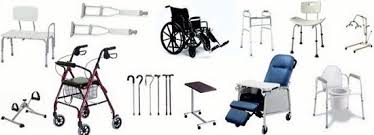How to Choose a Mental Health Therapy For Better Health
Choosing the best mental health therapy can be a crucial step toward feeling better and living a happier life. With many types of therapy available, it can be hard to know which one is best for you. Here’s a simple guide to help you make the right choice for your mental health needs.
1. Understand Your Needs
Before you start looking for a therapy, think about what you need help with. Are you dealing with anxiety, depression, stress, or relationship issues? Understanding your main concerns will help you choose the therapy that best suits your needs.
2. Learn About Different Therapies
There are many types of therapy, each with its own approach. Here are some common ones:
- Cognitive Behavioral Therapy (CBT): Helps you change negative thoughts and behaviors. It is practical and focuses on solving current problems.
- Mindfulness-Based Stress Reduction (MBSR): Uses meditation and mindfulness to reduce stress and improve well-being.
- Acceptance and Commitment Therapy (ACT): Encourages you to accept your thoughts and feelings while focusing on your values and goals.
- Eye Movement Desensitization and Reprocessing (EMDR): Helps process traumatic memories by focusing on them while following visual or auditory stimuli.
- Dialectical Behavior Therapy (DBT): Focuses on managing emotions and improving relationships with skills in mindfulness, emotional regulation, and distress tolerance.
- Art Therapy: Uses creative activities like drawing or painting to express feelings and explore emotions.
- Music Therapy: Uses music to improve mood, reduce anxiety, and promote relaxation.
3. Consider Your Preferences
Think about what type of therapy might suit you best. Do you prefer talking through your problems, or do you think you would benefit from creative activities? For example, if you find comfort in art or music, art therapy or music therapy might be a good fit. If you prefer a more structured approach, CBT or DBT might be better options.
4. Check the Therapist’s Qualifications
Make sure to find the qualified mental health therapist near me, because if you choose licensed and has the right qualifications it will surely help. This ensures they have the proper training to help you. You can usually find this information on their website or by asking them directly.
5. Look for Experience
Find out if the therapist has experience with your specific issues. For example, if you are dealing with trauma, look for a therapist who specializes in trauma therapy or EMDR. Experienced therapists are often better at handling specific problems and providing effective treatment.
6. Think About Location and Accessibility
Choose a therapist who is conveniently located. This makes it easier to attend sessions regularly. Consider their office hours and whether they offer virtual sessions if you prefer to meet online.
7. Review Costs and Insurance
Check how much the therapy costs and whether the therapist accepts your insurance. Some therapists offer sliding scale fees based on your income. Make sure you understand the costs involved to avoid any surprises.
8. Schedule a Consultation
Most therapists offer an initial consultation. This is a chance to meet them and see if you feel comfortable. Use this meeting to ask questions about their approach and to see if you feel at ease with them.
9. Evaluate Communication and Comfort
During the consultation, pay attention to how the therapist communicates. Are they a good listener? Do they make you feel understood and respected? Feeling comfortable with your therapist is key to a successful therapy experience.
10. Trust Your Feelings
After meeting a therapist, trust your feelings about them. If you feel comfortable and think they understand your needs, it’s a good sign. If you have doubts or feel uneasy, it might be worth trying another therapist.
11. Consider Therapy Methods
Different therapists use different methods. Some may use traditional talk therapy, while others might incorporate activities or exercises. Find out what methods the therapist uses and see if they match your preferences.
12. Set Clear Goals
Think about what you want to achieve with therapy. Do you want to reduce anxiety, improve relationships, or work through trauma? Setting clear goals can help you and your therapist work towards achieving them effectively.
Conclusion
Choosing the right mental health therapy is an important step towards better health. By understanding your needs, learning about different therapies, and considering your preferences, you can find a therapy that works for you. Remember to check qualifications, consider location and costs, and trust your feelings about the therapist. With the right support, you can take positive steps toward improving your mental well-being and living a happier, more fulfilling life.




